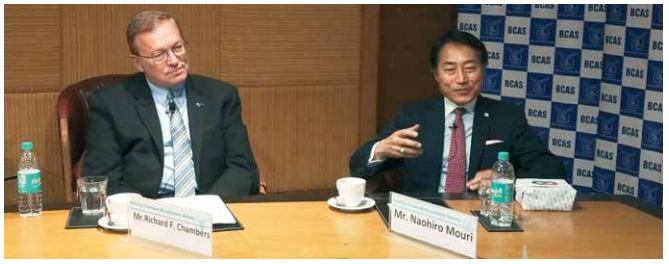Part A: Reported
Decisions
31 (2010) TIOL 765 ITAT-Ahm.
Shri Kanubhai Ramji Makwana
v. ITO
ITA No. 3983/Ahd./2008
A.Y. : 2005-06. Dated :
3-12-2010
Income-tax Act, 1961 — S.
40(a)(ia) — Provisions of S. 40(a)(ia) as amended by the Finance Act, 2010 w.e.f.
1-4-2010 are clarificatory in nature and therefore to be treated as
retrospective w.e.f. 1-4-2005, the date on which S. 40(a)(ia) has been inserted
by the Finance (No. 2) Act, 2004.
Facts :
The assessee, a contractor,
was required to get work done through sub-contractors. While assessing the total
income of the assessee, the AO disallowed a sum of Rs.1,16,58,614 u/s.40(a)(ia)
of the Act on the ground that the amount of tax deducted at source was not
deposited before the last day of the previous year.
Aggrieved by the order of
the AO the assessee preferred an appeal to the CIT(A) who observed that the AO
has disallowed the amounts based on unamended provisions of S. 40(a)(ia). The
CIT(A) observed that the provisions of S. 40(a)(ia) have been amended by the
Finance Act, 2008 w.e.f. 1-4-2005, and the amended provisions provide that tax
deducted in the last month of the previous year can be deposited before due date
specified u/s.139(1) of the Act for furnishing return of income. Accordingly, he
granted relief to the extent of payments aggregating to Rs.53,02,227 in respect
of which tax was deducted in the month of March 2004 and was paid on 19-7-2005
i.e., before the due date of filing return of income.
Aggrieved the assessee
preferred an appeal to the Tribunal where it contended that the amendment made
by the Finance Act, 2010 to provisions of
S. 40(a)(ia) w.e.f. 1-4-2010 is clarificatory in nature and since the tax
deducted has been deposited before the due date of filing return of income, no
disallowance u/s.40(a)(ia) is called for.
Held :
The Tribunal after going
through the history of the provisions of S. 40(a)(ia) observed that the
amendments brought out in S. 40(a)(ia) of the Act from time to time were
clarificatory and when an amendment is declaratory and clarificatory in nature,
the presumption against its retrospectivity is not applicable and amendments of
this kind only declare. It observed that it is no doubt true that, ordinarily, a
statute, and particularly when the same has been made applicable with effect
from a particular date should be construed prospectively and not
retrospectively. But this principle will not be applicable in a case where the
provision construed is merely explanatory, clarificatory or declaratory.
The Tribunal held that the
provisions of S. 40(a)(ia) as amended by the Finance Act, 2010 w.e.f. 1-4-2010,
which has newly been inserted by the Finance (No. 2) Act, 2004, w.e.f. 1-4-2005
to S. 40 of the Act is remedial in nature, designed to eliminate unintended
consequences which may cause undue hardship to the taxpayers and which made the
provision unworkable or unjust in a specific situation, and is of clarificatory
nature and, therefore, has to be treated as retrospective with effect from 1st
April, 2005, the date on which S. 40(a)(ia) has been inserted by The Finance
(No. 2) Act, 2004.
The Tribunal allowed the
appeal filed by the assessee.









